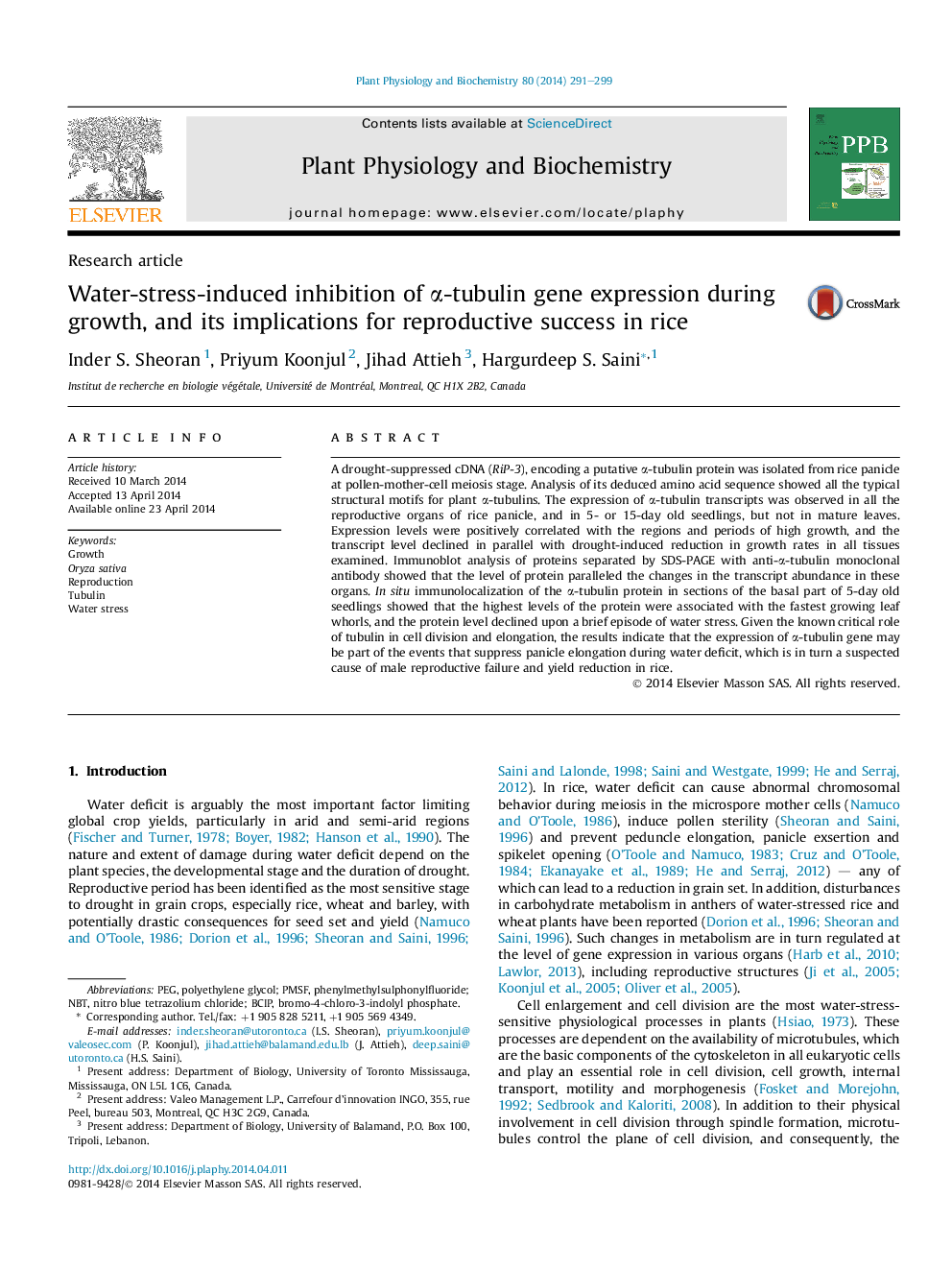| Article ID | Journal | Published Year | Pages | File Type |
|---|---|---|---|---|
| 2014840 | Plant Physiology and Biochemistry | 2014 | 9 Pages |
Abstract
A drought-suppressed cDNA (RiP-3), encoding a putative α-tubulin protein was isolated from rice panicle at pollen-mother-cell meiosis stage. Analysis of its deduced amino acid sequence showed all the typical structural motifs for plant α-tubulins. The expression of α-tubulin transcripts was observed in all the reproductive organs of rice panicle, and in 5- or 15-day old seedlings, but not in mature leaves. Expression levels were positively correlated with the regions and periods of high growth, and the transcript level declined in parallel with drought-induced reduction in growth rates in all tissues examined. Immunoblot analysis of proteins separated by SDS-PAGE with anti-α-tubulin monoclonal antibody showed that the level of protein paralleled the changes in the transcript abundance in these organs. In situ immunolocalization of the α-tubulin protein in sections of the basal part of 5-day old seedlings showed that the highest levels of the protein were associated with the fastest growing leaf whorls, and the protein level declined upon a brief episode of water stress. Given the known critical role of tubulin in cell division and elongation, the results indicate that the expression of α-tubulin gene may be part of the events that suppress panicle elongation during water deficit, which is in turn a suspected cause of male reproductive failure and yield reduction in rice.
Keywords
Related Topics
Life Sciences
Agricultural and Biological Sciences
Plant Science
Authors
Inder S. Sheoran, Priyum Koonjul, Jihad Attieh, Hargurdeep S. Saini,
